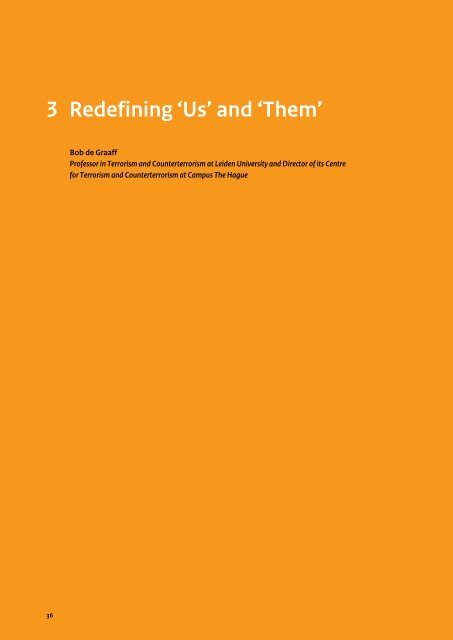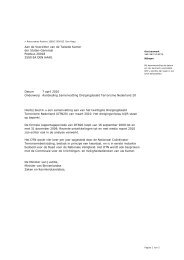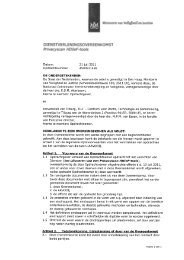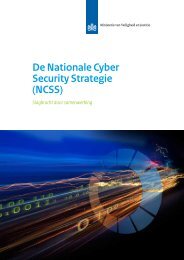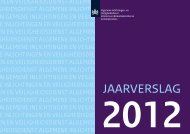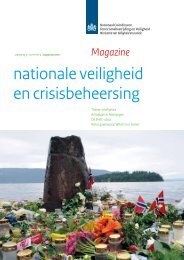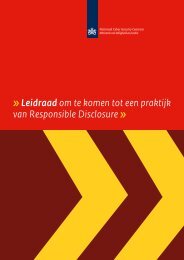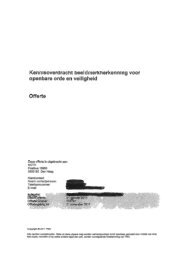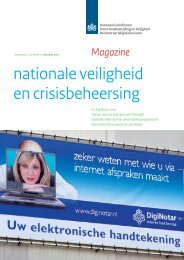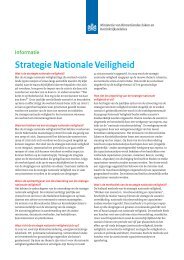Countering Violent Extremist Narratives
Countering Violent Extremist Narratives
Countering Violent Extremist Narratives
- No tags were found...
You also want an ePaper? Increase the reach of your titles
YUMPU automatically turns print PDFs into web optimized ePapers that Google loves.
3 Redefining ‘Us’ and ‘Them’Bob de GraaffProfessor in Terrorism and Counterterrorism at Leiden University and Director of its Centrefor Terrorism and Counterterrorism at Campus The HagueIntroduction‘Either you are with us or you are with the terrorists.’ By uttering these words nine days after the infamousattacks on the World Trade Center and the Pentagon on 11 September 2001, President George W. Bushdeclared a Global War on Terror (GWOT). It was a peculiar divide the President created, since ‘terrorism’does not designate a specific type of enemy. Terrorism is merely a tactic which may be and has beenutilised by very diverse groups, such as for instance the leftist movements in the 1970s in a host of westerncountries, including the United States; right-wing extremists like Timothy McVeigh, who attacked theAlfred P. Murrah federal building in Oklahoma in 1995, causing a death toll of 168, the most atrociousterrorist onslaught on U.S. soil until 9/11; loners like Theodore Kaczynski, the Unabomber, who tried tohalt scientific progress until he was finally apprehended by the FBI after 18 years; or even by states.Consequently, no matter how serious President Bush’s words were, they did not give a clear signal, norprovide a concrete strategy, the less so because if he was really declaring a full scale war on terror, his targetlist should have included the ETA in Spain, the Hindu/Marxist Tamil Tigers in Sri Lanka, the Maoist rebelsin eastern India, the Kurdish PKK and so on, which it obviously did not. The U.S.-led GWOT was aimed at asingle special brand of terrorism, i.e. Islamist or jihadist terrorism: not only al-Qaeda, but also the MuslimBrotherhood, Hamas, Hezbollah and similar terrorist organisations. Consequently, although many westernleaders, including President Bush, visited mosques and invited Muslim community leaders to indicate thatthe war on terror was neither a war against Islam, nor a crusade, as the President inaptly branded it a fewdays after 9/11, many got the impression that the crucial post-9/11 global divide was one between Muslimsand non-Muslims. After all, had the attacks not been committed by 19 Muslims, who either came from theMiddle East or studied in the ‘West’? And had not their leader, Mohammed Atta, left a testament in whichhe wrote that he wanted ‘to die as a good Muslim’? When many Americans asked themselves and theircompatriots ‘Why do they hate us?’, the word ‘they’ generally referred to Muslims and people from theMiddle East. Similar developments took place in Europe after the Madrid and London bombings and themurder of Dutch director and writer Theo van Gogh. Various European societies seemed to subsequentlypolarise around Muslim and non-Muslim identities. ‘How come I am a non-Muslim today whilst I was notone five years ago, as if I was baptised overnight?’, a Dutch author wrote in the year 2006. 1More than seven years after the events of 9/11, the new administration of President Barack Obama abandonedthe use of the term ‘war on terror’; several European countries had already done so previously. 2 Policy nowis to talk of a (counter)insurgency or a Global Counterinsurgency (GCOIN), or about an ‘overseas contingencyoperation’, but once again this is about tactics and not about adversaries and content. Clearly, somethingis changing in the way policymakers and strategists define their struggles today, but the question is: whereare they moving away from and where are they heading for? This brings me to three sets of interconnectedquestions I would like to address in this chapter:1. Who did we think until recently the ‘us’ and the ‘them’ constituted?;2. How do ‘they’ see ‘us’ and how do ‘we’ see ‘them’?; and3. Who should ‘we’ be and how would we like to be seen, compared to how ‘they’ would like to be seenand what opportunities they would like to get?1. Who did we think the ‘us’ and the ‘them’ constituted?As mentioned above, although there have been many efforts between 2001 and 2009 to create differentdivides, for instance between peace- and life-loving people on the one hand and death-loving people on3637


